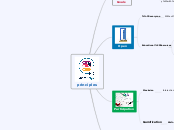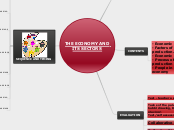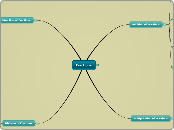Introducing Fractions-Section 1 by Loe G.B. 1. 5 TYPES OF FRACTIONS (note: numerator and denominator could also be negative.)
Complex* Fractions
Definition:
Either or both the numerator and the denominator are fractions.
Improper Fractions
Definition:
Digits in both the numerator and the denominator are integers; the numerator > the denominator.
Mixed Fractions
Definition:
A quantity represented by an integer and a proper fraction
Unit Frations
Definition:
Digits in both the numerator and the denominator are integers; the numerator = 1.
Proper Fractions
Definition:
Digits in both the numerator and the denominator are integers; the numerator < the denominator.
Simple Fractions
Definition: Digits in both the numerator and the denominator are integers; the denominator ≠ 0.
Examples
Paying Attention to Fractions-002 Group 3
4 Constructs: Lexia Simmons
Operator
Use of a fraction to enlarge or shrink a quantity by a factor
Fraction reduces or increases a quantity
Quotient
Dividing the numerator by the denominator
Equal Sharing
Result is the decimal equivalent for the fraction››
The Denominator indicates the number of items that are in one part of the set
The Numerator indicates the number of items that are in the other part of the set
Adding the numerator and the denominator together determines the fraction unit being used to partition, or divide, the set.
Part-Whole Relationships
Denominator indicates the fractional unit being used
Numerator indicates the number of fractional units being counted
Main topic
How Can We Promote Fractions Thinking? (Olivia Sieczkowski)
-Create a strong base for using operations throughout P/J grades( i.e introduction of dollars and cents)
-Ensure prior essential knowledge of operations is in place before introducing fractions
Equivelence and Comparing
-Help students understand the difference between parts and wholes and to consider both the numerator and denominator when comparing fractions
-Help students connect to other number systems besides division
Representations
- Introduce pictures and notational representations at the same time
- Provide familiar representations to new fraction concepts
- Provide similar representation throughout multiple grade levels (number lines, volume)
- Avoid introducing circles in P/J grades
-Counting from 0-1, in each individual unit which helps students understand the relationship between parts and wholes
-Introduce mixed and proper fractions at the same time
-use precise language
3. Models that should be used (Jasmine)
Using Models
When students using models it will help them test and develop predictions about the relationships within the fractions.
When using models the students have to make sure the whole remains unchanged. Which means the selection of model is important that the whole will not be spilt. Number lines are a good example to make sure that the whole is preserved.
Using models to compare fractions like a rectangle or a number line.
Allow students to use models to determine equivalent fractions.
Different types of Models
Area Model: a shape that represents the whole. With the fractional regions being equal in area they may not all be congruent.
Set Model: A bunch of items that represents the whole amount. Subsets of the whole make up fractional parts.
Volume Model: when a three-dimensional figure represents the whole. This whole would be divided into fractional regions that are occupied by space within the figure.
Part-Part Relationships
Number Line Model
2. Why is Understanding Fractions Importans (Ashley S.)
Building a Foundation
Understanding fractions allows students to build a foundation to develop an understanding for more complex mathematical concepts (e.g., proportionality and ratio, linear relationships, trigonometry, and radial measure)
Daily Life
Understanding fractions supports individuals in everyday activities (e.g., cooking, carpentry, sewing, etc.)
Not understanding fractions can cause difficulties in adulthood (e.g., failure to understand medication regiments)
3 Models that should be used (Eduardo)
Volume Model
a three-dimensional figure represents the whole. The whole is divided into fractionalregions that are occupied by space within the figure.
Set Model
a collection of items represents the whole amount. Subsets of the whole make up thefractional parts.
Area Model
one shape represents the whole. The whole is divided into fractional regions.
Key Concepts - Section 4 by Sarah C.
Operations
Students need a conceptual
understanding of equivalency,
estimating, unit fractions, and
part-whole relationships to
understand operations
When these concepts are
explored meaningfully,
students develop an implicit
understanding. For example,
students may realize that
3/4 = 1/4 + 1/4 + 1/4
Comparing and Ordering
Deciding which of the
relations is equal to, is
than, or is greater than
Students can use models,
benchmarks, common
numerators, equivalent
fractions and/or unit
fractions to compare and
order fractions
Equivalency
When determining equivalent
fractions, students are
identifying different fractional
units that can be used to
describe a quantity
Example: 1/3 = 5/15 = 7/21
The Whole
The denominator provides information
about how the whole has been divided
Example: When considering 3/2 as a
quotient, the 3 is the whole and the 2 shows the number of partitions
Unit Fractions
In part-whole fractions, the denominator indicates the fractional unit, or the number of equi-partitions of the whole being considered. Students develop flexibility in representing unit fractions by using physical models, pictures, and numbers.
6. Fractions Across Strands and Grades + Ministry Resources (Emma C.)
Resources
To aid in leaning and understanding fractions there are many wide ranging resources listed by the ministry. These resources vary from research articles, webcasts, educational documents and digital games.
Strands & Grades
Instructing fractions in a punctuated fashion (chucked), allows students to better comprehend fractions as a unit. While also allowing teachers to be responsive to students when planning additional activities. Students are then able to connect their understanding of fractions to other math units and concepts.









